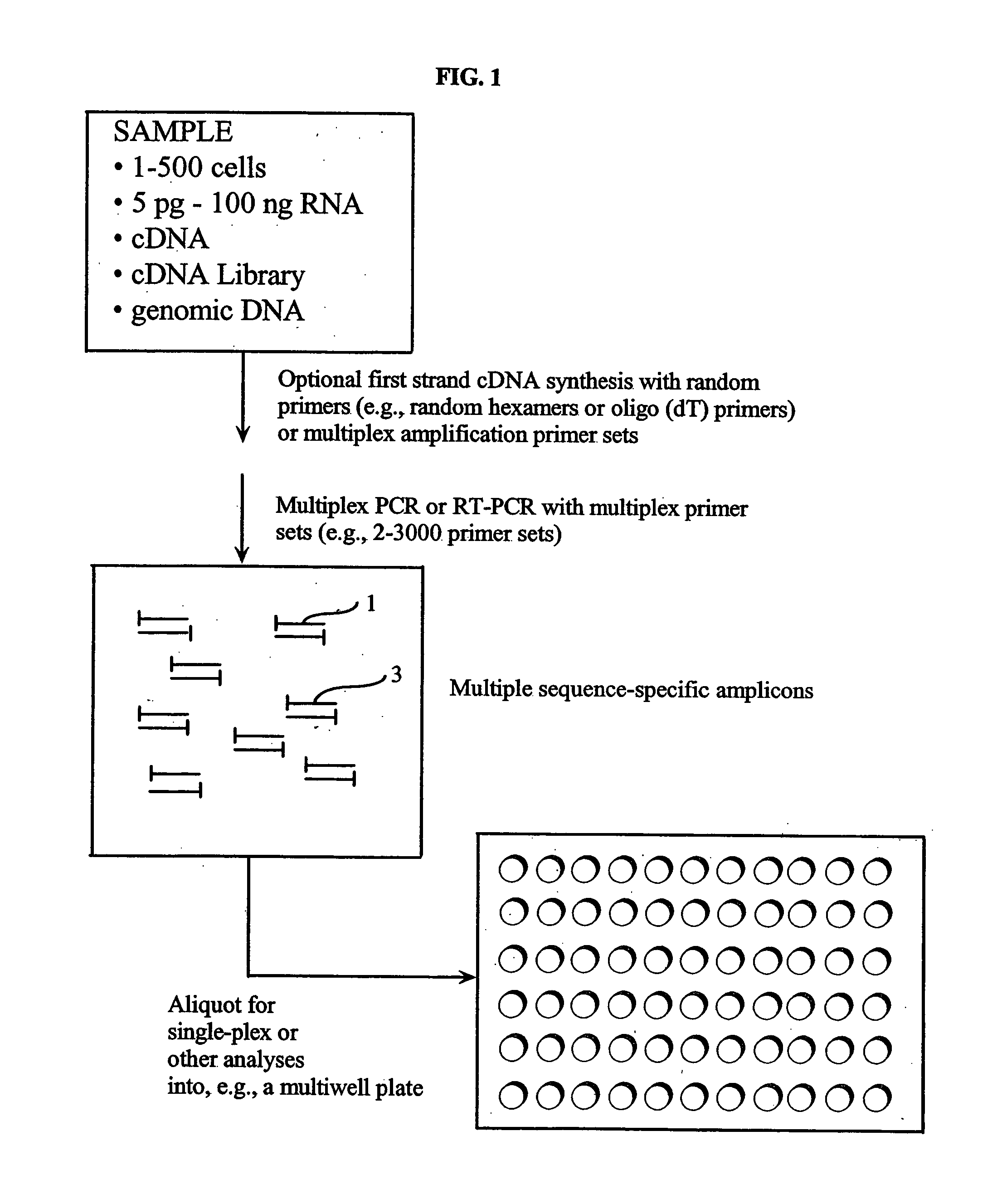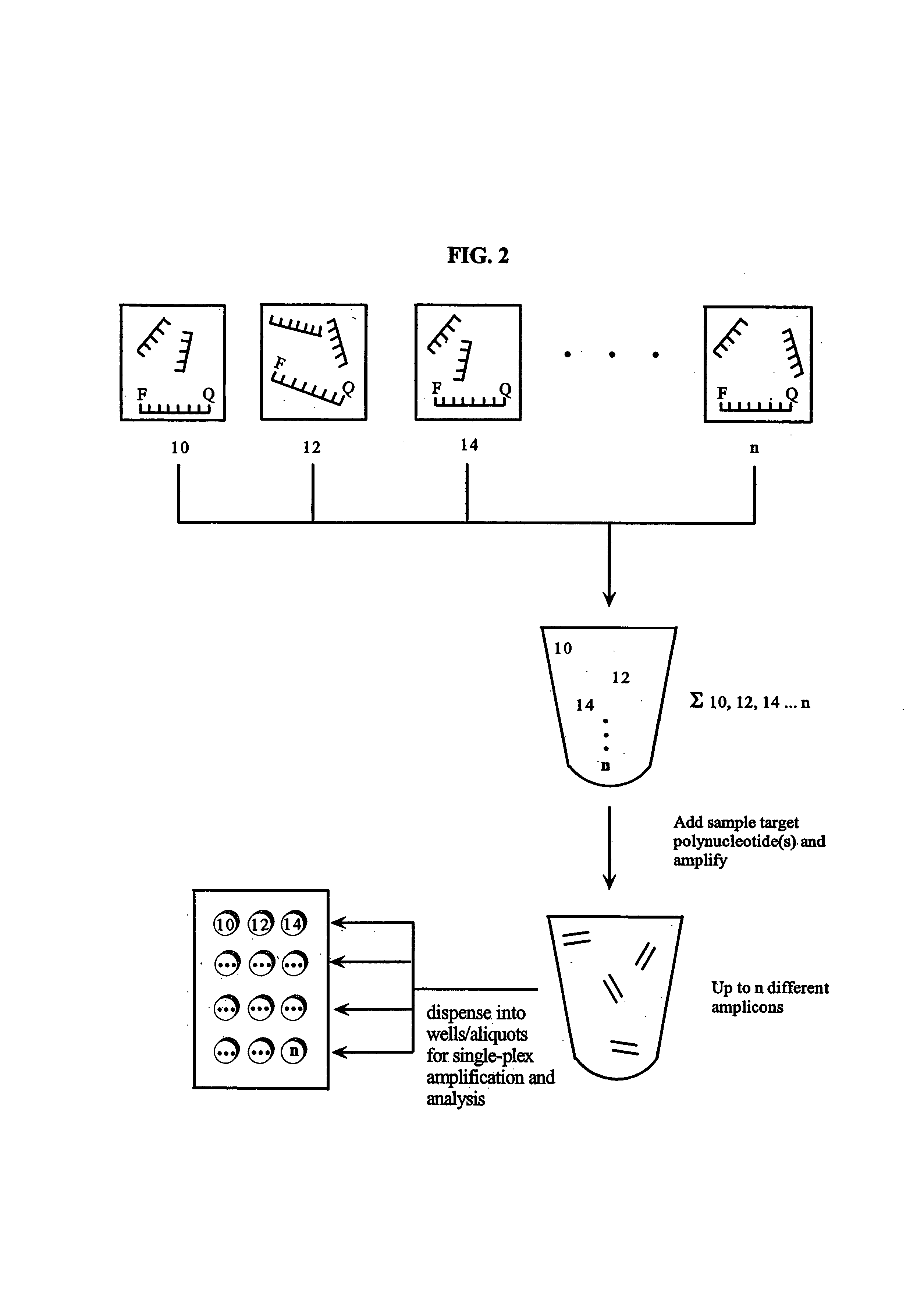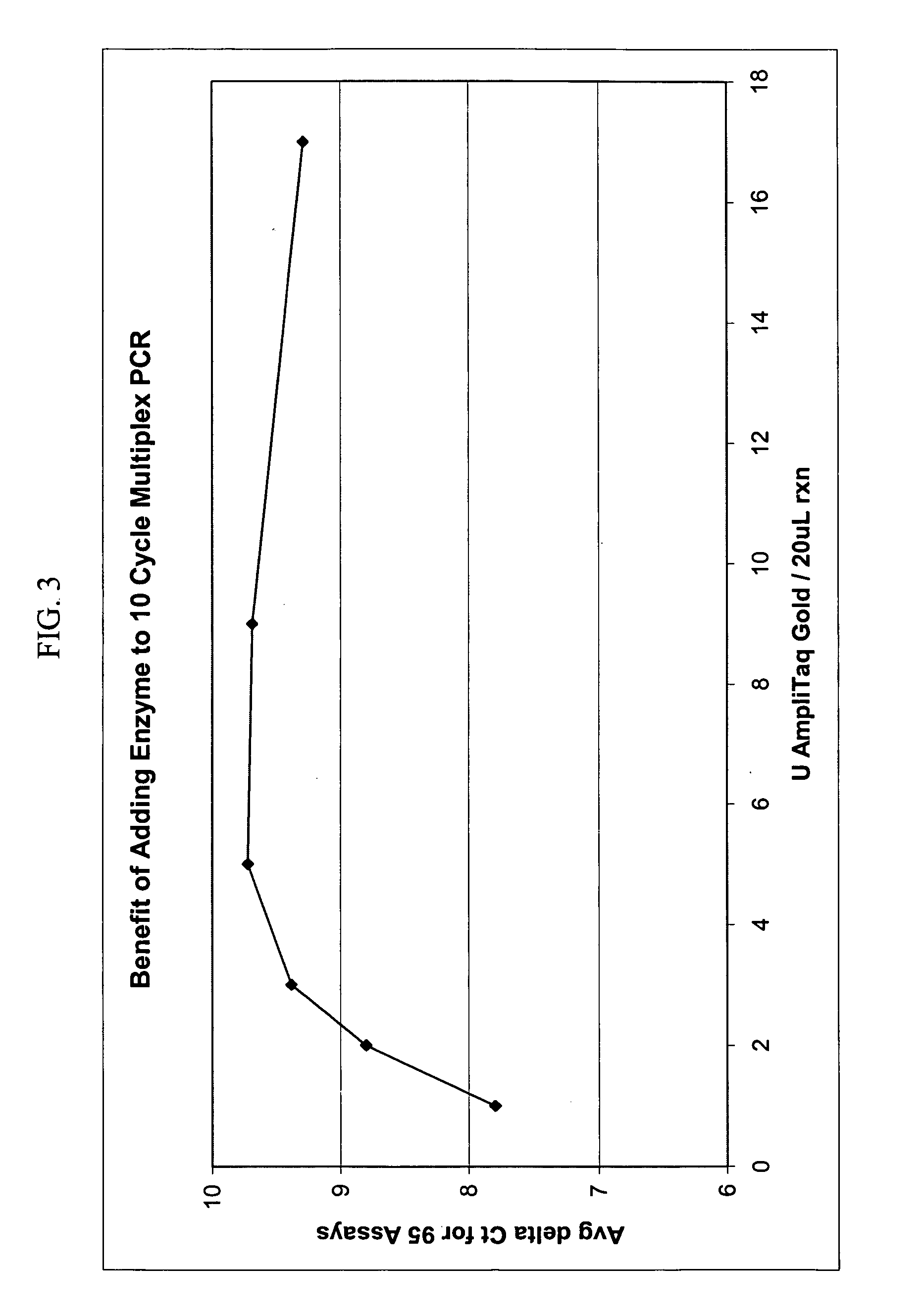Multiplex amplification of polynucleotides
a polynucleotide and multi-amplification technology, applied in the field of molecular biology, can solve the problems of time-consuming and costly conventional approaches, and achieve the effect of high degree of efficiency
- Summary
- Abstract
- Description
- Claims
- Application Information
AI Technical Summary
Benefits of technology
Problems solved by technology
Method used
Image
Examples
example 1
7.1 Example 1
Multiplex Amplification Performance Increases with Increasing Concentration of DNA Polymerase
[0104] To determine the optimal amount of DNA polymerase for performing multiplex amplifications, 95-plex amplifications were carried out as a function of DNA polymerase concentration. The amplification primer mix for the 95-plex amplification was prepared by pooling 10 .mu.L from each of 95 different randomly selected 20.times. Assays-on-Demand.TM. Gene Expression Products (Applied Biosystems, an Applera Corporation business, Catalog Nos. Hs0170531_m1; Hs00176369_m1; Hs00176332_m1; Hs00170586_m1; Hs00173565_m1; Hs00176247_m1; Hs00170192_m1; Hs00177127_m1; Hs00176908_m1; Hs00170380_m1; Hs00173925_m1; Hs00170681_m1; Hs00176394_m1; Hs00170633_m1; Hs00173872_m1; Hs00174690_m1; Hs00170288_m1; Hs00173798_m1; Hs00170423_m1; Hs00174927_m1; Hs00174805_m1; Hs00175976_m1; Hs00176222_m1; Hs00173678_m1; Hs00170261_m1; Hs00173592_m1; Hs00174781_m1; Hs00177401_m1; Hs00173854_m1; Hs00173936_m1...
example 2
7.2 Example 2
Multiplex Amplifications are Efficient at Extremely Low Primer Concentrations Which Do Not Require Optimization
[0108] Two of myriad advantages of multiplex amplifications is the ability to efficiently amplify in a single reaction multiple sequences using extremely low primer concentrations and without having to optimize individually the concentrations of the primers. To demonstrate these points, 100 ng cDNA was multiplex amplified for 0 cycles or 10 cycles in a 95-plex amplification as described in Example 1, using 6 U / 20 .mu.L DNA polymerase. Each multiplex amplification was divided and 95 individual single-plex reactions were performed as described in Example 1. The .DELTA.Ct value (Ct.sup.0 cycles-Ct.sup.10 cycles) for each single-plex reaction was obtained and plotted on a bar graph for visual comparison (FIG. 4). As for Example 1, the optimal .DELTA.Ct for a particular reaction is 10. As can be seen from FIG. 4, 90 out of 95 of the assays performed well in the rand...
example 3
7.3 Example 3
Multiplex Amplifications Can be Carried Out in the Presence of Oligonucleotide Probes
[0110] Another significant advantage of multiplex amplifications is the ability to carry out the reaction in the presence of oligonucleotide probes without significant interference during either the multiplex amplification or downstream amplifications carried out on the multiplex amplification product. This former advantage is apparent from Example 2, supra. In Example 2, efficient amplification was achieved in the multiplex amplification step, which by virtue of utilizing Assays-On-Demand.TM. reagents to create the multiplex primer pool, included TaqMan.RTM. MGB oligonucleotide probes in the reaction.
[0111] To demonstrate the latter advantage, a single-plex RNase P assay (DNA specific) was run with 1 ng of genomic DNA in the presence or absence of a 5.times.concentration of the 95-plex primer / probe pool (RNA-cDNA specific) described in Example 1. The 5.times.concentration of 95-plex pr...
PUM
| Property | Measurement | Unit |
|---|---|---|
| Fraction | aaaaa | aaaaa |
| Fraction | aaaaa | aaaaa |
| Time | aaaaa | aaaaa |
Abstract
Description
Claims
Application Information
 Login to View More
Login to View More - R&D
- Intellectual Property
- Life Sciences
- Materials
- Tech Scout
- Unparalleled Data Quality
- Higher Quality Content
- 60% Fewer Hallucinations
Browse by: Latest US Patents, China's latest patents, Technical Efficacy Thesaurus, Application Domain, Technology Topic, Popular Technical Reports.
© 2025 PatSnap. All rights reserved.Legal|Privacy policy|Modern Slavery Act Transparency Statement|Sitemap|About US| Contact US: help@patsnap.com



